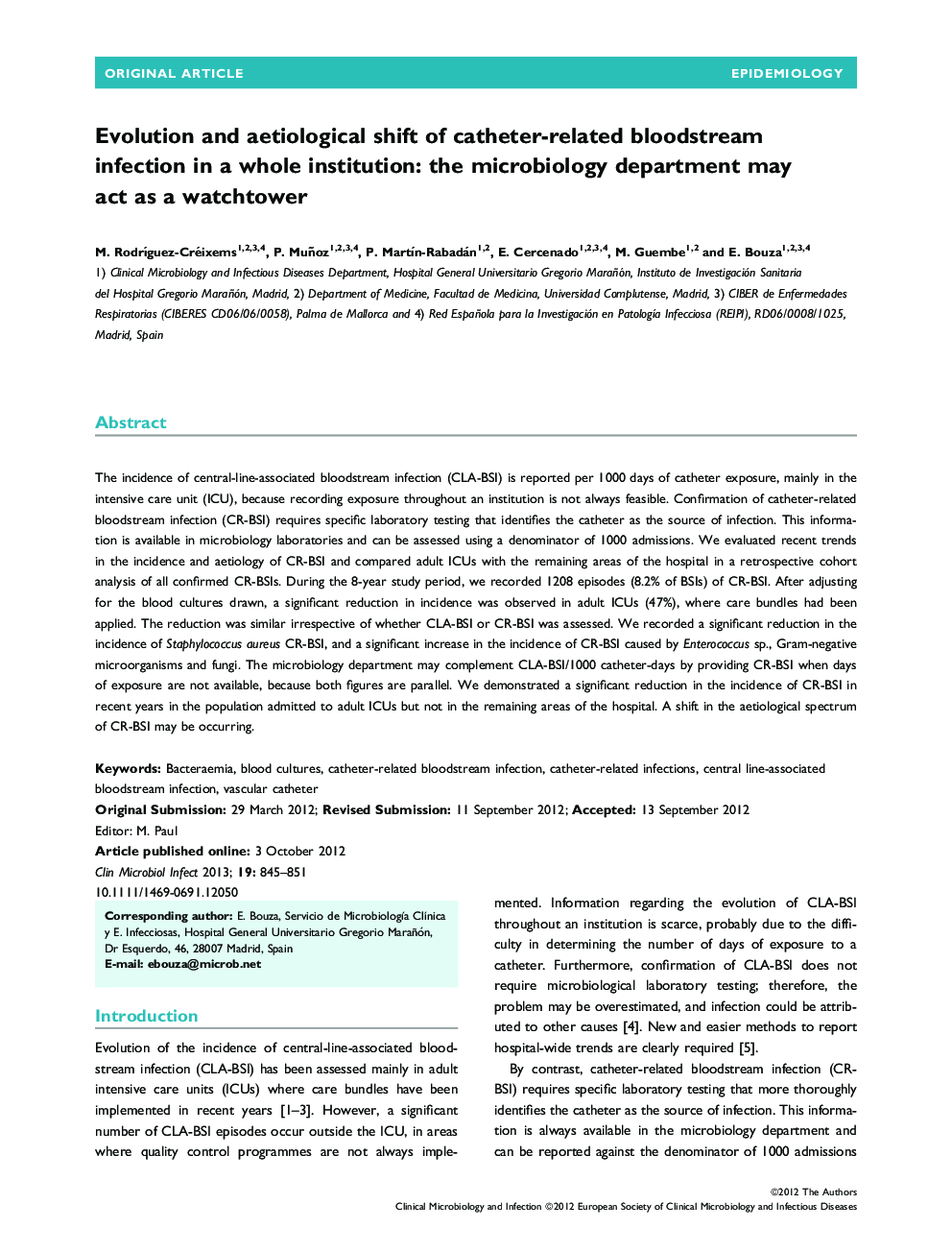| Article ID | Journal | Published Year | Pages | File Type |
|---|---|---|---|---|
| 6130592 | Clinical Microbiology and Infection | 2013 | 7 Pages |
Abstract
The incidence of central-line-associated bloodstream infection (CLA-BSI) is reported per 1000 days of catheter exposure, mainly in the intensive care unit (ICU), because recording exposure throughout an institution is not always feasible. Confirmation of catheter-related bloodstream infection (CR-BSI) requires specific laboratory testing that identifies the catheter as the source of infection. This information is available in microbiology laboratories and can be assessed using a denominator of 1000 admissions. We evaluated recent trends in the incidence and aetiology of CR-BSI and compared adult ICUs with the remaining areas of the hospital in a retrospective cohort analysis of all confirmed CR-BSIs. During the 8-year study period, we recorded 1208 episodes (8.2% of BSIs) of CR-BSI. After adjusting for the blood cultures drawn, a significant reduction in incidence was observed in adult ICUs (47%), where care bundles had been applied. The reduction was similar irrespective of whether CLA-BSI or CR-BSI was assessed. We recorded a significant reduction in the incidence of Staphylococcus aureus CR-BSI, and a significant increase in the incidence of CR-BSI caused by Enterococcus sp., Gram-negative microorganisms and fungi. The microbiology department may complement CLA-BSI/1000 catheter-days by providing CR-BSI when days of exposure are not available, because both figures are parallel. We demonstrated a significant reduction in the incidence of CR-BSI in recent years in the population admitted to adult ICUs but not in the remaining areas of the hospital. A shift in the aetiological spectrum of CR-BSI may be occurring.
Keywords
Related Topics
Life Sciences
Immunology and Microbiology
Microbiology
Authors
M. RodrÃguez-Créixems, P. Muñoz, P. MartÃn-Rabadán, E. Cercenado, M. Guembe, E. Bouza,
